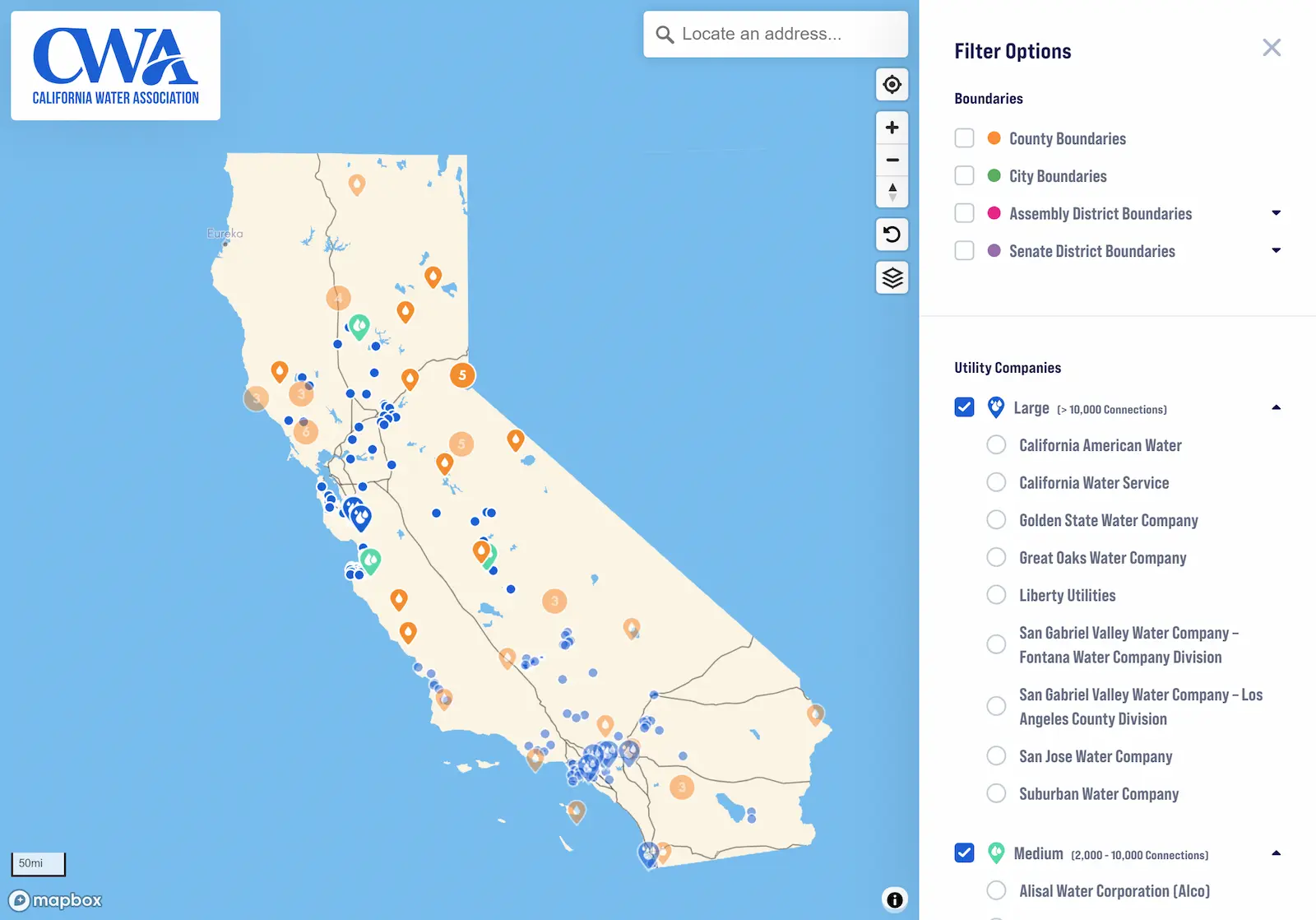Providing Safe, Reliable Water to California Communities
 Regulated water utilities have successfully provided safe, reliable, high-quality drinking water in hundreds of California communities for more than a century. Today, nearly 6 million Californians—roughly one in six residents—gets their water from a regulated water utility.
Regulated water utilities have successfully provided safe, reliable, high-quality drinking water in hundreds of California communities for more than a century. Today, nearly 6 million Californians—roughly one in six residents—gets their water from a regulated water utility.
Regulated water utilities have many similarities with their municipal counterparts. For example, all water providers—whether regulated or municipal—have comparable water supply sources and they manage their supply portfolios similarly. All water providers must meet water quality and environmental standards set by the state and federal governments. They must also make the system improvements necessary to meet those increasingly stringent standards.
They serve as community stewards that promote water-use efficiency and environmentally-sound business practices. They are fully engaged in comprehensive, ongoing conservation programs with their customers, including meeting California’s mandate to reduce urban water use 20 percent by the year 2020. They are joined together in managing water carefully during California’s frequent and ongoing droughts, including compliance with the water-use restrictions mandated by the State Water Resources Control Board.
But there are some unique differences and benefits, as well. Water utilities regulated by the California Public Utilities Commission (CPUC) are some of the most highly regulated companies in the state. The Commission and its independent Office of Ratepayer Advocates (ORA) scrutinize each regulated water utility on behalf of customers by reviewing company costs and auditing system needs. And unlike municipal water providers, which generally set their own rates through a political process under Proposition 218, the CPUC sets rates for regulated water utilities strictly on the basis of direct costs for providing service through a transparent process that includes formal public hearings and the involvement of ORA, which actually manages each general rate case for the Commission. This oversight ensures that rates to customers are as low as possible and consistent with reliable, high-quality service.
Financing infrastructure is an area where there are similarities and differences between regulated water utilities and their municipal counterparts. Both types of utilities access the debt markets for bond financing—taxable debt for regulated utilities and tax-exempt debt for municipal utilities. Both rely on customer revenues to service (pay back) this debt. A major difference and benefit for customers is that regulated water utilities have another investment source for their infrastructure needs–access to equity markets.
Regulated water utilities own the infrastructure used to treat and distribute water to customers, and they rely on funds from utility shareholders to invest in the infrastructure. This enables them to build and maintain their water and delivery systems in order to provide the best water service at competitive rates. They also help local economies by paying franchise, property and other business taxes—costs that do not apply to public agencies.
Quality, stewardship, transparency, local investment and customer service—these are just a few of the hallmarks of California’s regulated water utilities.


